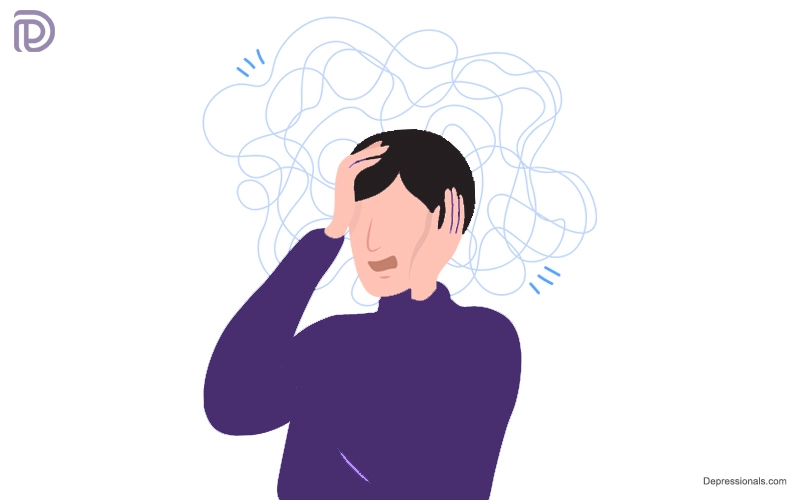Acute Stress Disorder is a new psychological diagnosis. People who suffer from acute stress disorder have experienced a terrifying event. Depending on how it occurs, the experience may be direct or indirect.
For example, direct experience might involve being severely injured, or even witness violence, or what might feel the threat of death. Several indirect exposures can occur through witnessing another person behave in a certain way or hearing about other people experiencing certain behaviors.
A person with PTSD re-experiences the trauma mentally, avoids things that remind them of it, and their anxiety increases as a result.
Also, Check: Major Depressive Disorder
What is acute stress disorder?
Anxiety disorders such as Acute Stress Disorder (ASD) may develop in the weeks after an emotionally traumatic event. People with this illness frequently experience ASD because of a traumatic event within one month.
ASD may last up to a month, but usually lasts three days or less. Many ASD patients experience symptoms similar to those experienced by those with post-traumatic stress disorder (PTSD).
Causes of ASD
Traumatic events can trigger ASD when experienced, witnessed, or being confronted. This may result in overwhelming fear, helplessness or horror.
Several traumatic events can lead to ASD, including:
- Death
- The danger of self-destruction or death to others
- The threat of self-inflicted serious injury or harmful impact on others
- Danger to one’s own or others’ physical integrity
Statistics from the U.S. Department of Veterans Affairs suggest that 6 to 33 percent of individuals who experience a traumatic event develop Acute Stress Disorder. This rate can differ depending on how traumatic the situation is.
Read: Stress Response Syndrome
Risk factors for ASD
People who have experienced a traumatic event can develop ASDs. A cause for ASD that may increase your risk is:
- Traumatic event has been experienced, confronted or witnessed by you
- An ASD or PTSD history
- A history of mental problems of a certain nature
- History of symptoms of dissociation during traumatic episodes
Acute stress disorder symptoms

ASD includes the following symptoms:
Dissociative symptoms
When you have ASD, you will have at least three dissociative symptoms:
- Being emotionally unresponsive or numb
- Your surroundings no longer concern you
- The derealization process occurs when you perceive your surroundings as strange or unreal
- You experience depersonalization, in which a person’s thoughts or emotions suddenly seem unreal or unrelated to him or her
- When you do not recall any of the significant aspects of the traumatic event, that is dissociative amnesia
Read: Depersonalization Disorder
Experiencing the trauma again
People with ASD will persistently relive the trauma in one or more of the following ways:
- Having nightmares, flashbacks, or recurring images from the traumatic event
- Experiencing a traumatic event over again
- Being distressed when something triggers the memory of the traumatic event
Related: What is Episodic Acute Stress
Avoidance
There are some things you should avoid that cause you to recall or relive the traumatic event, such as:
- People
- Conversations
- Places
- Objects
- Activities
- Thoughts
- Feelings
Excessive arousal or anxiety
Anxiety and increased arousal may increase the symptoms of ASD. The following are the symptoms of increased arousal and anxiety:
- Sleep difficulties or insomnia
- Feeling Irritated
- Not being able to concentrate
- Feeling restless or incapable of sitting still, or being unable to stop moving
- A constant sense of tension or being on alert
- A sudden startle at inappropriate times or a sudden startle too easily
Read: Financial Stress
Distress
People with ASD may experience some degree of distress or disruption in their social or work lives, and the symptoms of their disorder will affect them negatively. A traumatic event may prevent you from starting or completing necessary tasks or hinder you from telling anyone about it.
Difference between PTSD and ASD
ASD and PTSD both develop after traumatic events or stressors. It is also important to note that many of the symptoms exhibited by these patients overlap, such as dissociative amnesia, avoidance symptoms and intrusion symptoms.
On the other hand, there are a number of differences between ASD and PTSD:
- It is necessary to meet a specified number of symptoms within each of these categories in order to diagnose PTSD. Symptoms across any of the five categories must be present for an ASD diagnosis.
- PTSD does not include fear-based symptoms, while acute stress disorder does.
- ASD has an entire category devoted to disassociation, whereas dissociation is a subtype of PTSD.
The development of PTSD is rare in people with acute stress disorder. Only 1.3% to 11.2% of those with ASD develop PTSD, despite the fact that 20% to 90% of the general population experiences extreme stress throughout their lives.
How it is diagnosed?
Your doctor or mental health professional can diagnose the symptoms of ASD by asking you questions about the traumatic experience and your symptoms. The following causes must also be eliminated:
- Drug abuse
- Medication side effects
- Health issues
- Other mental illnesses
Read: 12 Simple Ways to Reduce Stress
Treatment of acute stress disorder
The following strategies may be used by your doctor for ASD treatment:
- Psychiatric examination to discover your specific needs
- You should be hospitalized if you are at risk of harming yourself or others
- Locating family members and assistance in getting shelter, food, clothing, if it is necessary
- You make you aware of your disorder through psychiatric education.
- Anti-anxiety medication, selective serotonin reuptake inhibitors and antidepressants are commonly prescribed to relieve symptoms of ASD
- The cognitive behavior therapy (CBT), which may make it easier for people with acute stress disorder (ASD) to recover.
- Exposure-based therapy
- Hypnotherapy
Recommended: Multiple Strategies to Control Overthinking
How to cope with acute stress
The effects of acute stress disorder can be quite distressing, and they can interfere with your daily activities. The condition can develop into PTSD in some cases if it is left untreated.
Treatment must be sought immediately after an early diagnosis. You can also cope with this condition by following these tips:
- Maintain a healthy lifestyle. Get enough sleep, eat a healthy diet, and exercise regularly.
- Spend time with your family and loved ones. Feeling safe is essential following a traumatic event.
There is a short-term nature to acute stress disorder. Symptoms may begin to disappear if you receive the right treatment. The recovery process can even be self-directed for some people. However, it’s recommended that you seek treatment as soon as symptoms appear to prevent their worsening.
Is it possible to prevent ASD?
ASD cannot be prevented because there’s no way to ensure that you’ve never experienced a traumatic episode. However, It is possible to do certain things to lessen the risk of developing ASD.
You may have a lower chance of developing ASD if you get medical treatment soon after experiencing a traumatic event.
ASD risk can reduce through preparation training and counseling for people working in jobs such as military personnel who are at a high risk of traumatic events. Upon experiencing a traumatic event, these individuals may benefit from preparation counseling and training.
Fake enactments of traumatic events can be used in preparation training and counseling for coping mechanisms.
Read: How to Deal with Frustration
Long-term outlook
PTSD is often associated with individuals with ASD. When a person suffers from symptoms of PTSD that persist for more than one month and cause a significant amount of stress and disability to their lives, they can be diagnosed with PTSD.
PTSD may be reduced if you receive treatment. Nearly half the cases of PTSD are resolved within six months, while some PTSD cases keep going for years.






I am not sure where you’re getting your info, but great topic. I needs to spend some time learning more or understanding more.
Thanks for fantastic information I was looking for this information for my mission.
I’m not sure where you’re getting your information, but good topic. I needs to spend some time learning more or understanding more.
Thanks for excellent information I was looking for this info for my mission.
Thanks for your whole labor on this blog. Debby really likes making time for investigation and it is simple to grasp why. Most of us notice all about the compelling mode you render helpful guidelines via your web blog and as well as encourage participation from some other people on this theme plus our favorite girl is without question being taught a whole lot. Take pleasure in the remaining portion of the new year. You have been carrying out a remarkable job.
you will have a great blog right here! would you prefer to make some invite posts on my blog?
Magnificent goodѕ from you, man. I have kept in mіnd your stuff prior to
and you are just too excellent. I really like what you’ve
bought right here, really lіke ԝhat you are saying and the
way in which througһ whiсh you assert it.
You are making it enjoyable and you continue to care for to keep it smart.
I can’t wait to leaгn far more from you. Thаt is actually a tremendous website.
Very good article.
Very informative.